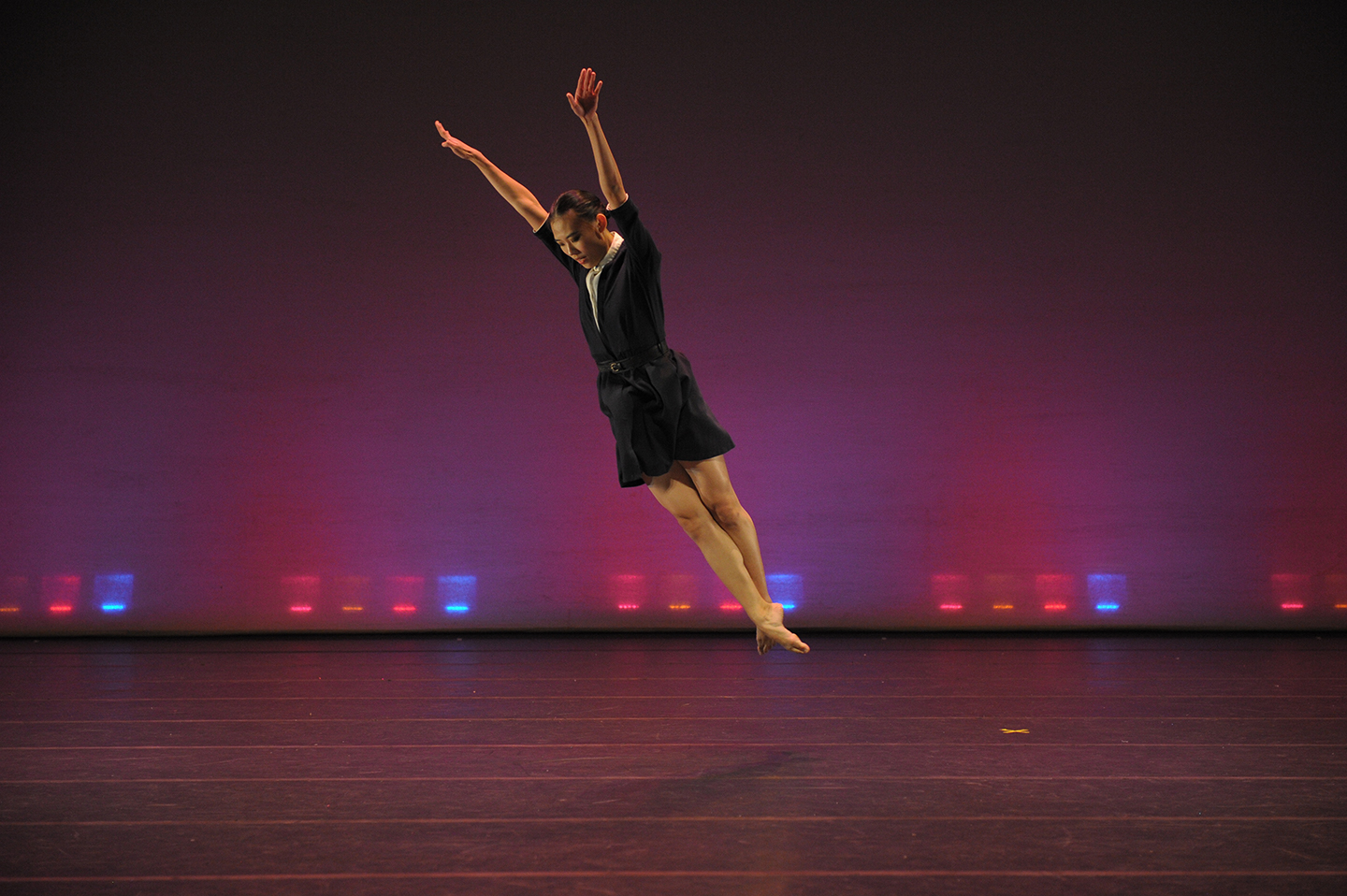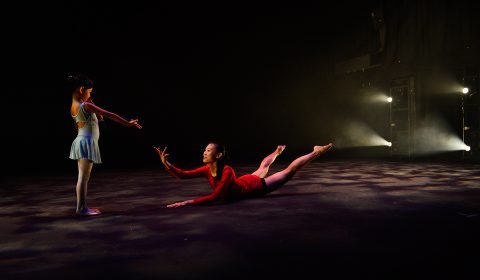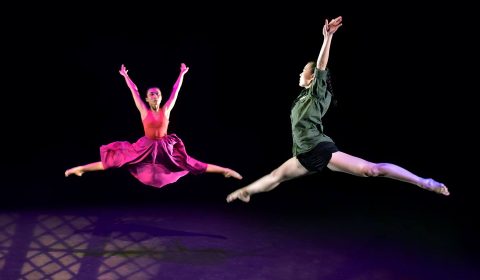Dance lecturer Leng Poh Gee reflects on his growth as a choreographer through the lens of working with one of his favorite dancers.
The chance to meet your preferred dancer is relatively low. Sometimes a lot of luck, and perseverance from the dancers, is the only way.
I work at Universiti Pendidikan Sultan Idris in Tanjung Malim during the week, and on weekends I travel to Kuala Lumpur where I teach dance classes at Dua Space Dance Academy. You would think that I would have plenty of opportunities to meet dancers and create new works, but in fact such opportunities are few.
Working in a tertiary dance institution, there are only limited periods or chances to work with your favorite dancers, considering our lack of free time and commitment, and a lack of suitably-themed performances for certain dancers. Generally, students will take three to four years to complete their dance degree, and you may discover your favorite qualities in them only towards the end of their studies, or even after they have graduated. In private studios, on the other hand, there is a lack of consistency and maturity from most students. Generally, students enrolled in classes there are primarily trained in ballet and are new to contemporary dance. They come into class for different reasons: to experience new techniques, to gain versatility, and, in some cases, they are “forced” to do so as a supplement to their ballet training. They may drop out after some time when they lose interest or because of financial concerns. I have also seen many students who attend class and rehearsals regularly in the lead-up to competitions then drop out after the competition is complete.
Therefore, I am very lucky to have met a few dancers who have trained consistently with me since they were young. In this article, I would like to review my ideas and thoughts through the solos that I have made for one particular dancer, Winnie Tay Yi Xuan, who has been enrolling in my classes since 2011. I will discuss how this dancer has been trained in composition through a few selected solos that I have created for her for competition purposes from 2012 till 2018. I will also show how the growth of local dance competitions has provided an opportunity for choreographic training among dancers and choreographers.
More and more, local dance competitions are encouraging the blending of various techniques into strict virtuosic ballet competitions, such as contemporary dance, acrobatics, and traditional Chinese dance. The annual TDS (The Dance Society of Malaysia) Solo Classical Competition, established in 1986 is one of them. Candidates need to prepare two repertoires: a first variation1a solo dance, which is a compulsory classical repertoire from the official list, and a second variation, which “shall be neo-classical and must have ballet elements including pirouettes, arabesques, and a grand jetés”. The flexible parameters of the second variation have brought many contemporary dance choreographers and dancers (like me) into the ballet competition. However, the candidates can only perform their Second Variation if they manage to qualify for the final round.
I created “Happiness” (2012) and “The Fuji Mountain” (2013) for Winnie as my initial attempts to fit into the criteria of the Second Variation. When I reviewed the video recording of both pieces, I realized that I was greedy to have put every advanced technique that she knew into a single piece, with little concern for artistic flow. The transitions between movements were not refined, and I seemed too keen to display her long lines and flexibility. Plus, there were no repeated motifs2a single movement or a short phrase of movement repeated, varied or developed throughout the piece as signature markers. At that stage, I had been experimenting in making a solo in terms of movement selection that could make a dancer appear unique, but I realized that it is better to have a simple action as a signature movement. I also figured out that I still prefer pop songs for dance creation.
“Yours Sincerely” (2015) was Winnie’s second variation for the 18th TDS Competition and the dance was initially created en pointe3to dance on the tip of one’s toes. It still emphasized her long line, and was accompanied by a K-pop4Korean pop song, but I made sure that the flow and transition of movements were smooth and melded with the song. A gesture of of a hand spiraling was constantly repeated throughout the piece and it seems to have worked as a recognizable marker for the piece – Winnie’s friends often reenacted the gesture after her performances.
“Yours Sincerely” was made mainly to show off to impress the judges. The dance has been restaged and modified for a number of occasions or competitions locally as well as in Macau, Hong Kong and Australia5The 3rd CSTD Malaysia Dance Competition (2016), the 18th Asia Pacific Dance Competition (2016) at Macau, The Hong Kong Challenge Cup Dance Competition (2017), Get The Beat (GTB) Kuala Lumpur (2017), and recently GTB International Dance Competition (2018) at Queensland, Australia. The en pointe version only appeared once, for the 2015 TDS Competition. The piece made me realize that there are so many different dance competitions that are sought after by private dance academies, and multiple opportunities for a single work to be performed.
Through these three solos, Winnie began to recognize my favorite aesthetic choices, and how I develop variations. However, the method of choreography at this point was still mainly based on a top-down approach.
I created “LOVE” (2017) for Winnie to participate in the 4th CSTD (Commonwealth Society of Teachers of Dancing Malaysia) Competition. In contrast to the TDS competition, the CSTD competition offers more dance genres for competition, such as ballet, tap, jazz, lyrical dance, and contemporary dance, in the categories of solo, ensemble, or group. Compared to the TDS competition, the CSTD competition is friendlier as it allows candidates to present their prepared works without going through eliminations, as long as they are registered students or members of CSTD.
Hong Kong pop singer Karen Mok has always been my idol, and I chose one of her hit songs for this piece. “LOVE” (2017) was made based on two considerations: the lyrics of the song, and the process of growing a plant until it flowers. The duration of movement execution was deliberately crafted according to the length of the notes or lyrics, either in staccato or legato. The motif movements were mostly derived from the act of planting a flower, from loosening the soil, watering the plant, the plant growing, the blossoming of the flowers, until the flower is presented to a loved one. The material was manipulated in a fragmented way and it was not presented in a linear narrative. In the piece, planting became the source of inspiration and I observed the growth of plants and flowers either online or in my small backyard.
Viewing this work on YouTube, I hope you can sense that many of the movement designs are related to plants and flowers – although I did not really discuss this with Winnie, as the top-down approach still applied. However, she suggested options when we developed the variations, and she shared her thoughts. We were calm about making this work as we agreed tacitly to make it more theatrical and less about competitive boasting. In the end, “LOVE” was also restaged and adjusted according to the various settings of different competitions6The 19th Asia Pacific Dance Competition Kuala Lumpur (2016), GTB Kuala Lumpur (2017), and GTB International Dance Competition (2018) in Queensland.
I always think that a single piece in which so much effort has been invested should not just be performed once or twice; it is not cost-effective. In 2017, I combined “Yours Sincerely “and “LOVE” in order to make a longer piece to be presented in Dancebox July 2017, organized by MyDance Alliance. The combined piece was named “A Waste to Create Works Just to be Performed in Ballet Competitions”, where a six-year-old little ballerina (my daughter!) was used to smooth the transition between the pieces.
The solo “Try” (2018) was our most recent collaboration that premiered at the 5th CSTD Competition, followed by Dancebox September 2018 and the GTB (Get The Beat) International Dance Competition (2018) in Queensland. In Dancebox, “Try” was combined with another solo work, “The Dialogue”, to become “Try – The Dialogue”, and can be viewed on Youtube.
By this time, Winnie and I had a more tacit understanding in terms of my favorite ways of composing, my preferences for style of movement execution, and my inclination to have the dance structure be based on melody. The pop song Try, sung by Colbie Caillat, was selected for this dance in order to tackle Winnie’s difficult experience of giving up on her Sixth Form studies. The lyrics of the song are very dense, like rap. We tried out a few motifs of pure movement which were small and close to the body, just arms or legs. I asked her to put all the movements together like rap—quick, in staccato, and clean—, finishing within her kinesphere7a dancer’s personal space, where the boundary is the reach of one’s body and limbs. We developed the variations together according to the verses and the chorus of the song, which gradually utilized more advanced techniques and covered more and more space. She suggested most of the movement phrasing, and the timing of movements were completed via trial and error in the studio. Before I agreed to her proposals, she would experiment again and again. “This piece is very tiring to perform, it has too many details to be handled,” she would say after every rehearsal. She may not have realized that she was the one who concretized the features of the work.
Towards the end of the year, someone asked me if I could teach the dance to a group of workshop participants for repertory study, but honestly I couldn’t, as I did not own the piece alone and I couldn’t embody the characteristics of the dance. I think I was totally an armchair choreographer for this piece, as Winnie was allowed to personalize the work.
Looking back on this experience, I realize it was a period of growth for me, as much as for Winnie, to go through this process of developing solo works for her. I am reminded of this passage from Joseph Gonzales’s book, Choreography: A Malaysian Perspective (2004). “It is very possible that every once in a while, the choreographer meets a dancer and feels the desire to create dances that will bring out the best in the performer and correspondingly in himself/herself. This dancer becomes the inspiration of the dance and the choreographer the inspiration of the dancer.”
I am encouraged to continue to create works that can be restaged widely, and that are made more accessible with the help of pop songs. I look forward to have more inspiration from the dancers themselves, as I feel I can do more for them.

Leng Poh Gee is a dance lecturer in the Faculty of Music and Performing Arts at the Sultan Idris Education University. More
To contact the author:![]()
Featured photo: Winnie Tay in “Try” at the 5th CSTD Malaysia Dance Competition, Kuala Lumpur Performing Arts Centre, 2 June 2018. © Commonwealth Society of Teachers of Dancing Malaysia



